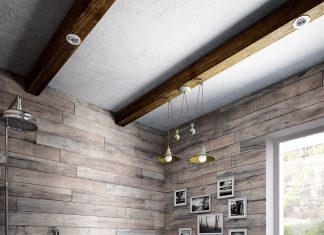Many a backyard BBQ and get-together with family and loved ones can be held on a timber deck. Kids can ride their bikes and play happily, whilst adults either join in with the kids or sit back and relax watching the world go by. Once you’ve looked into timber supply, built your deck, and remodelled your brand-spanking new al fresco setting, you can sit back with pride and a sense of achievement and enjoy the labours of your hard work.
Naturally, you’ll want to make the most out of your newly completed project and have the decking looking fresh and clean, as well as being safe for as long as possible. Here are some helpful hints to keep your outdoor area in tip top shape.
-
Take everything of the deck before you clean it.
It can be quite cumbersome to try and clean around large items of furniture and a combined number of small items such as children’s play equipment or chairs. Not only does it make cleaning that little bit harder, but you are sure to miss areas if you want to do a thorough job. Having the area clear gives, you more space to clean and that your decking has that lovely over all clean and fresh look.
-
Keep it clean.
Invest in a decent broom to sweep away all the dirt, grime and other debris that falls onto the decking. Keeping it clean can help prevent stains and build-up of unwanted materials. If you’re giving your decking a decent clean and want to move onto oiling, this will help dislodge any particles that need shifting.
The best type of broom for this project is a soft bristle broom or if your heart desires, there is a more specific brush called a deck scrub brush. A wire brush will scratch the oil of the wood if you have oiled it and can also cause damage to the grain of the wood.
Sweep up after each event and tend to spills and staining promptly to stop them from seeping in and staining the wood or stripping away any oils and polishes you might use.
-
Soapy water and some good old-fashioned TLC.
Grab a bucket of warm soapy water and a nylon brush and get in there are get it all a good scrub. Go with the grain so as not to mark the wood. Choose a non-abrasive cleaner. Vinegar and dishwashing liquid can be used. Avoid the use of bleach.
There are products on the market that are specific to deck cleaning. Hardware stores will have an abundance of these, but take care to ensure that they are suitable or tailored for timber decking.
-
Power wash, but with care.
Whilst it might seem like a great idea to bust out the gurney and blow all the problems away, your standard gurney might also strip away any oil and also leave the wood looking rather bare and faded. Use a very light and less powerful cycle with cold water, and do it from a distance rather than blasting the wood at top speed at close range.
-
Oil your deck every 6 – 12 months.
It might be tempting to oil your deck as soon as it’s been installed, but most installers advise to wait between 4 – 8 weeks to allow the wood to weather and settle properly before oiling.
To oil your deck, you’ll need to take everything of it and have it all clean and fresh. Pick a week when you know the weather is going to be sunny without being too hot.
Select an oil that will bring out the wood’s natural grain, colour, and texture. A high-quality oil will be simple to apply, will fend off moisture, will offer resistance to mould and fungus, and will provide protection from harmful UV rays.
For best results, apply the oil with a pad with a pole extender for larger spaces to save time. It’s time to apply the oil to your timber deck after cleaning and preparing it for oiling. To ensure a uniform application, thoroughly mix the oil before using it.
Run the brush or pad along the deck as long as you can in a straight line to apply oil.
Try to keep your hands away from the planks on either side.
Move on to the subsequent row once you have completed the first row. On the remaining portion of the deck, keep doing this. Each board should have an even coating of oil applied with lengthy, continuous strokes. Make careful to apply the oil evenly by taking your time.
You can apply the second coat once the initial application has dried as directed. The second application will require less oil because the timber won’t be able to absorb as much of it.
In case of spills, have a rag on hand, along with methylated spirits, which will also assist to thin out the oil.
It’s best to wait a week before putting furniture back onto your deck.
-
Don’t paint it.
As tempting as it might be to colour your deck, don’t. The timber looks great as it is and the paint doesn’t adhere well on wood decks. Decking woods aren’t particularly good surfaces for a coat of paint. This implies that the paint will eventually flake, peel, and generally seem a little unattractive. Stain is also always more effective than paint at protecting the deck’s wood.
-
Tend to any issues promptly.
Preventative maintenance should be routinely done. Having a thorough timber deck maintenance regimen will help identify any problems with the nails and screws’ surface wear and tear. Start with the wood itself, then investigate the screws and nails.
You should be able to see the nails or screws going along the struts where the majority of timber decks are fastened. Over time, these nails may begin to rust or the wood may even begin to push the nails out.













